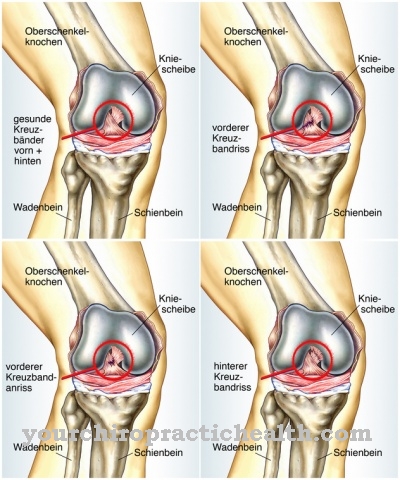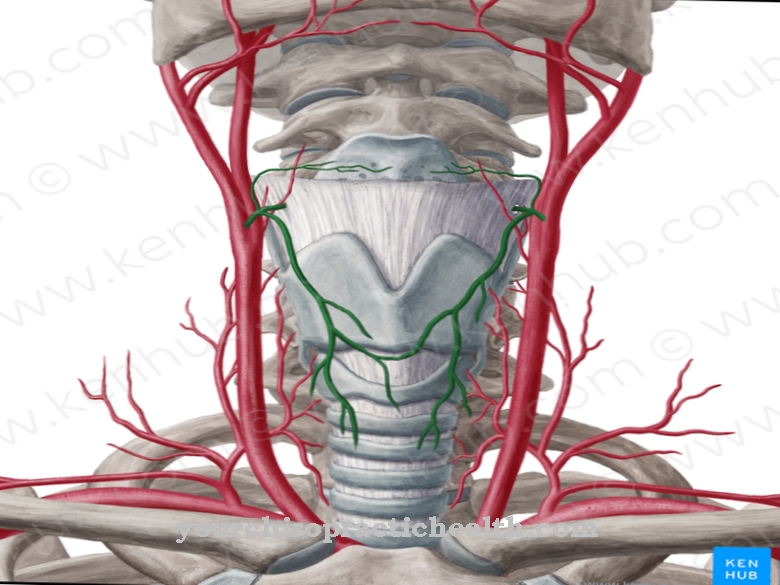Of the poor of humans is also known as the upper extremity. It serves as a gripping tool and helps with balancing movements when walking upright.
What is the arm
The poor in the upper arm, forearm and hand. He has the greatest range of motion of all body parts. The arm and hand consist of a total of 30 bones.
Historically, the arms are a further development of the forelimbs in mammals. Their most important function is therefore the intake of food in the form of a gripping tool.
Since humans have been able to walk on two legs, the arms also serve as an aid to balance when walking and running. This is particularly evident when you pendulum motion while jogging.
Anatomy & structure
The upper arm forms the part of the body near the Arms and houses the largest bone of the upper extremity: the humerus. This is connected to the shoulder blade above in the shoulder joint and to the ulna and radius below via the elbow joint.
Well-known and important muscles of the upper arm are the M. biceps brachii ("biceps muscle") and the M. triceps brachii ("triceps muscle"). The biceps muscle acts as a forearm flexor, the triceps as a forearm extensor. So the triceps is the antagonist, i.e. Opponent, the biceps. The largest upper arm muscle is the deltoid muscle (deltoid muscle), which surrounds the shoulder joint from above. Its main function is to raise the arm.
The forearm extends from the elbow joint to the wrist. It consists of two bones: ulna and radius. Both are tubular bones and are attached to the elbow and wrist. The ulna is much thinner and weaker than the spoke. It is on the little finger side, whereas the spoke is on the thumb side. A special feature of humans is that the ulna and radius are not fused together. This allows the wrist and forearm to rotate.
The muscles of the forearm can be divided into four groups according to their function. The pronators (e.g. pronator terres muscle, round inward turner) enable the ulna and radius to be turned inward. The supinators include e.g. the supinator muscle (away from home). He turns his forearm outwards. The forearm muscles also include the hand and finger flexors, as well as the hand and finger extensors.
The skeleton of the hand consists of the carpal bones, metacarpal bones and finger bones. The wrist consists of eight carpal bones (scaphoid bone, moon bone, triangular bone, pea bone, large polygonal bone, small polygonal bone, head bone, hooked bone), which are connected to one another by ligaments and arranged in two rows of four knots each. The tubular bones of the metacarpus adjoin these carpal bones. Humans have five metacarpal bones that are arranged almost parallel.
The metacarpal bones are divided into three sections: the base, which is articulated with the carpal bones, the shaft, and the head. The finger bones follow the five metacarpal bones. These consist of two phalanges for the thumb and three phalanges for all other fingers (base, middle and end phalanx). The individual phalanxes are connected to one another via small joints.
The muscles that move the hand and fingers are divided into flexor and extensor muscles. The musculature of the hand consists of a total of 33 muscles and is very complex. Most of the muscles originate on the upper or lower arm and only continue through tendons to the hands and fingers. The so-called short hand muscles run on the hand itself; they spread the fingers at the base joints or pull them together again.
Function & tasks
The mobility in the arm, shoulder and wrist is the poor the part of the body with the greatest freedom of movement. The diverse range of motion offered people the opportunity to use their front limbs as a gripping tool.
In addition, the pendulum movements of the arms are an important support when walking upright. They help with balancing and also cushion the body's up and down movements, thus relieving the legs.
You can find your medication here
➔ Medicines for painIllnesses & ailments
Due to the extremely complex anatomical structure of the poor The list of possible diseases is also varied. One of the most common diseases affecting the arms is tendinitis.
They are usually caused by overload and occur more frequently in the area of the wrists or elbow joints. The hands are also one of the most frequently affected parts of the body in osteoarthritis.
Because supporting and catching with an outstretched arm is an instinctive act in the event of a fall, crossbreaks are also common in the emergency rooms. For example, upper arm fractures make up around four to five percent of all fractures.
Other complaints can be: arm pain, warm extremities, cold extremities, broken upper arm and shoulder-arm syndrome
























.jpg)



